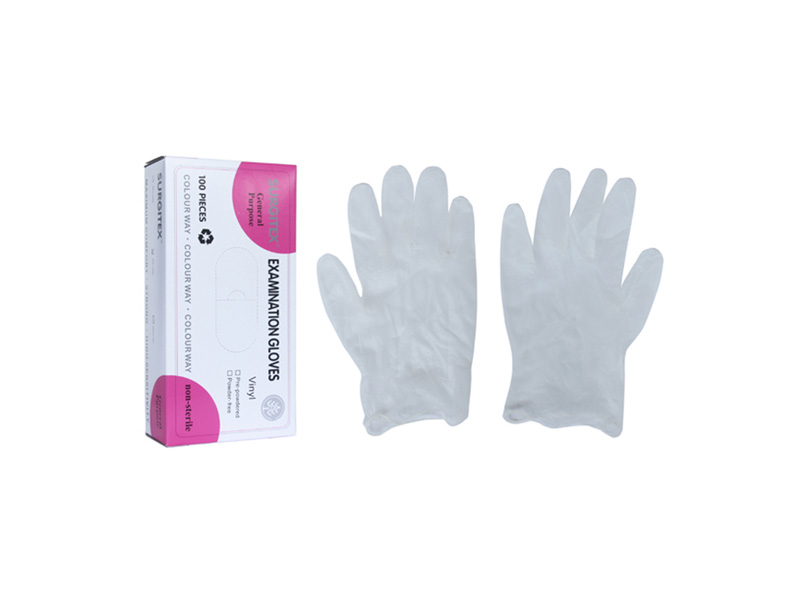Compare the cost of sterilized and non-sterilized vinyl examination gloves
Because of their cost-effectiveness, non-sterilized vinyl examination gloves have become a popular choice in the healthcare industry. However, there is a long-standing debate as to whether non-sterilized vinyl examination gloves are as effective as sterilized gloves. In this article, we will take an in-depth look at the cost differences between sterilized and non-sterilized methods of vinyl examination gloves.
Non-sterilized vinyl examination gloves are made of polyvinyl chloride (PVC) and are commonly used in healthcare facilities for routine procedures such as medical examinations. These gloves come in a variety of colors, sizes and thicknesses, making them a versatile choice for a variety of medical settings. They provide a barrier to body fluids, bacteria and viruses and help prevent cross-contamination. The cost of unsterilized vinyl exam gloves is significantly lower than sterilized gloves, making them a popular choice for healthcare providers.

Sterilized vinyl exam gloves, on the other hand, are treated with gamma radiation or ethylene oxide gas to kill any microorganisms present on the gloves before they are packaged and distributed. Sterilization ensures that the gloves are free of any harmful pathogens and can be safely used for sensitive procedures, such as those with a high risk of infection. The sterilization process adds an extra layer of assurance that non-sterilized vinyl examination gloves cannot provide.
When comparing the cost of sterilized and non-sterilized vinyl examination gloves, several factors need to be considered.
(1) The cost of raw materials used to produce gloves varies greatly.
Sterilized gloves require additional manufacturing processes, including sterilization, which can add to the overall cost.
(2) The cost of packaging and distribution also varies.
Sterilized gloves require specialized packaging to maintain their sterilized state, which can result in higher shipping costs.
(3) The cost of waste management is another consideration.
Once sterilized gloves are used, they are considered biohazardous waste and must be disposed of properly. On the other hand, non-sterilized vinyl examination gloves can be disposed of as ordinary waste.
According to a study conducted by the American Journal of Infection Control, non-sterilized vinyl examination gloves cost approximately 50% less than sterilized gloves, making them an attractive option for healthcare providers looking to reduce costs without sacrificing quality. However, it is important to note that while non-sterilized vinyl examination gloves may be more cost effective, they do not provide the same level of infection protection.
In addition to cost considerations, healthcare providers should also consider other factors when choosing between sterilized and non-sterilized vinyl examination gloves. These include the nature of the procedure being performed, the risk of infection, and the health care provider's preferences. For example, if a healthcare provider is performing a routine physical exam, non-sterilized vinyl examination gloves may be the appropriate choice. However, if the provider is performing an invasive procedure such as surgery, sterilized gloves would be more appropriate.
In summary, the cost difference between sterilized and non-sterilized methods for vinyl examination gloves is significant. While non-sterilized vinyl examination gloves may be more cost-effective, they do not provide the same level of protection against infection as sterilized gloves. When deciding which gloves to use in different healthcare settings, healthcare providers must weigh the pros and cons of each option. Ultimately, the decision between sterilized and non-sterilized vinyl examination gloves should be based on the specific needs of the healthcare provider and the patients they serve. For more detailed information, please feel free to contact us!



